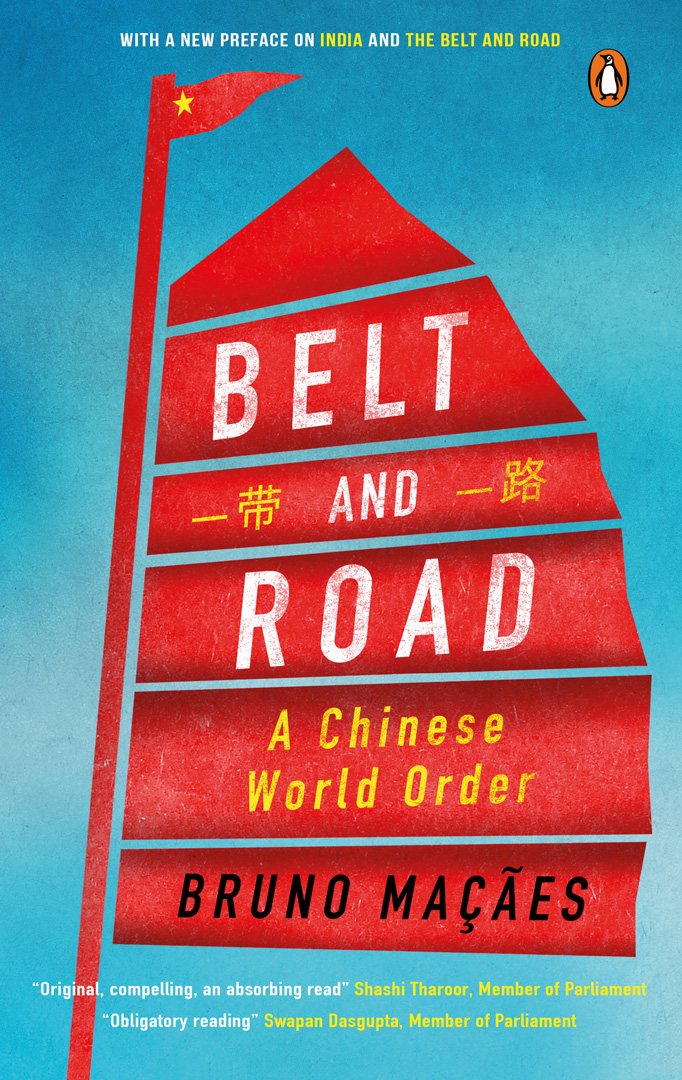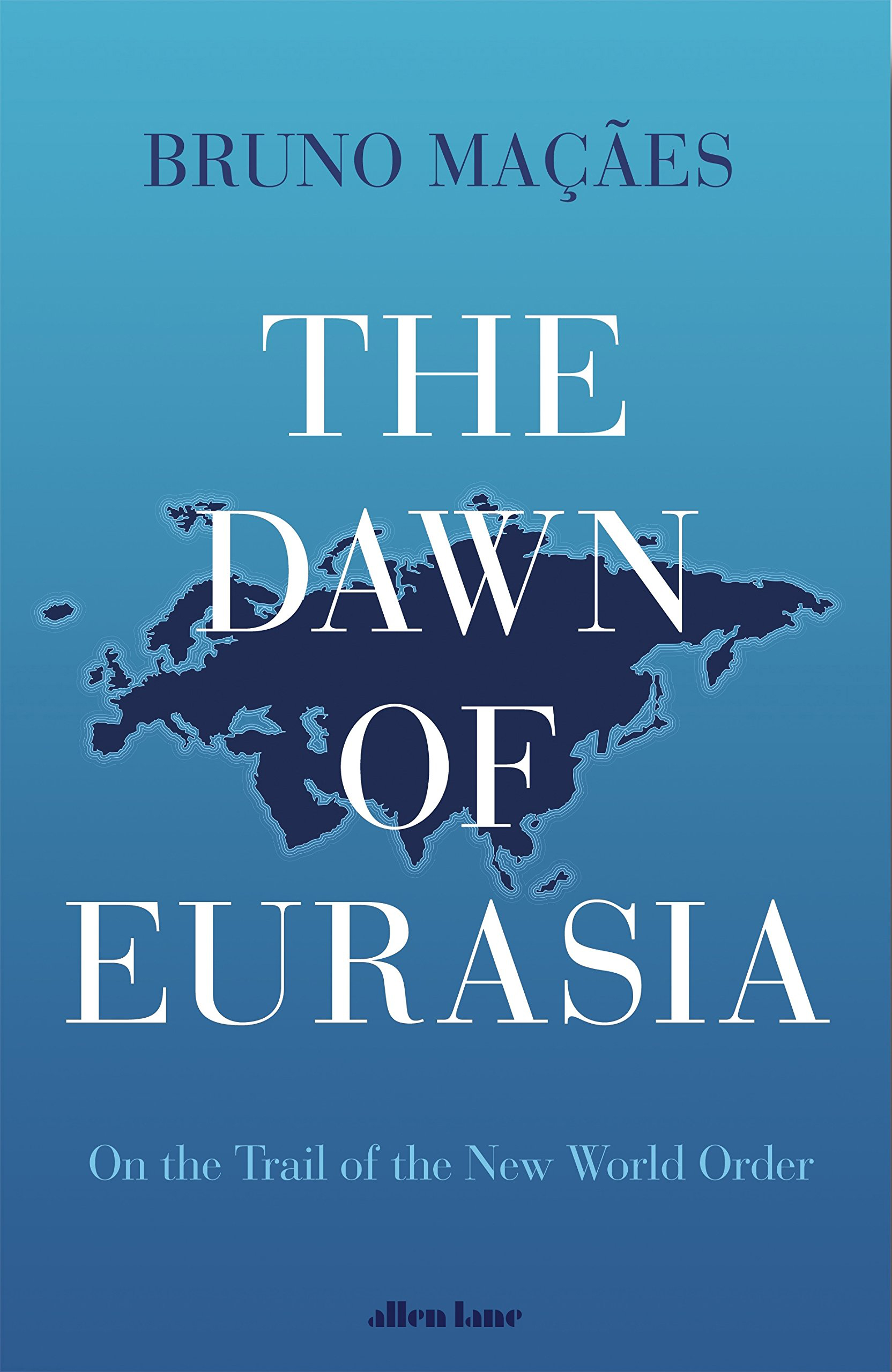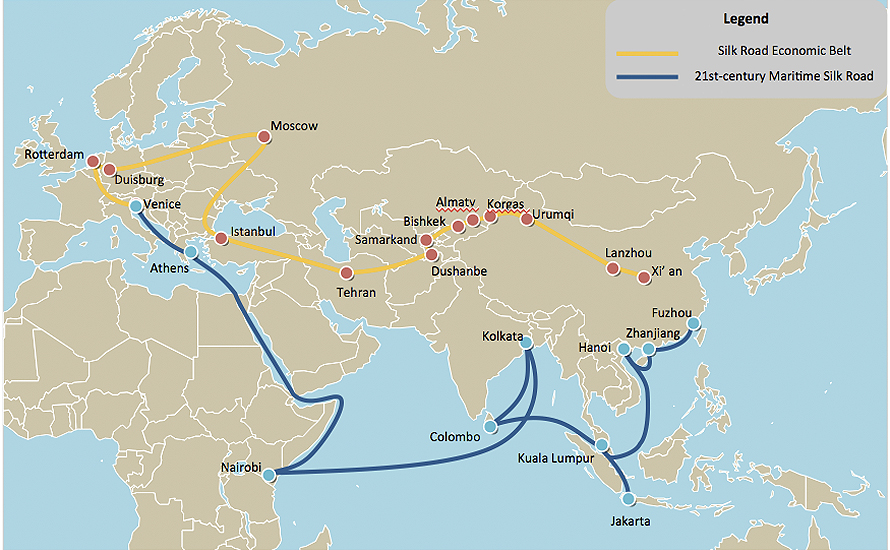Breadcrumb
Blogs
Entries with Categories Global Affairs Asia and tag the silk road .
[Bruno Maçães, Belt and Road. A Chinese World Order. Penguin. Gurgaon, India, 2019. 227p.]
review / Emili J. Blasco
 |
Covered the moment of literature devoted to presenting the novelty of the project A Chinese leader of the New Silk Road, Bruno Maçães leaves aside many of the specific specifics of the Chinese initiative to deal with its more geopolitical aspects. That is why throughout the book Maçães uses the name Belt and Road all the time, instead of its acronyms – OBOR (One Belt, One Road) or the lately more used BRI ( Belt and Road Initiative) – because he is not referring so much to the layout of transport connections themselves as to the new world order that Beijing wants to model.
Through this economic integration, according to Maçães, China could project power over two-thirds of the world, including Central and Eastern Europe, in a process of geographical cohesion of Eurasia to which this politician and the European Union has already been able to achieve this goal. researcher He dedicated his earlier work.
Compared to other essays on the New Silk Road, this one directs a lot of attention to India (this is true in its general content, but also in this one). review A special edition has been used for that country, with a particular introduction).
Maçães grants India the role of core topic vault in the project integrator of Eurasia. If India decides not to participate at all and instead gamble on the alternative promoted by the United States, along with Japan and Australia, then the design China will not reach the dimension desired by Beijing. "If India decides that life in the Western order will be better than under alternative arrangements, the Belt and Road will struggle to achieve its original ambition," says the author.
However, Maçães believes that the West is not entirely that attractive to the subcontinent. In that Western order, India can only aspire to a secondary role, while the rise of China "offers it the exciting possibility of a genuinely multipolar, rather than merely multilateral, world in which India can legitimately hope to become an autonomous center of geopolitical power," at least on the same level as a declining Russia.
Despite these apparent advantages, India will not go completely to either side, Maçães predicts. "It will never join the Belt and Road because it could only consent to join China in a project that it was new. And it will never join a U.S. effort to rival the Belt and Road unless the U.S. makes it less confrontational." So, "India will leave everyone waiting, but it will never make a decision on the Belt and Road."
Without the involvement of Delhi, or even more so, with resistance from the Indian leadership, neither the US nor China's vision can be fully brought to fruition. internshipMaçães continues. Without India, Washington may be able to preserve its current model of alliances in Asia, but their ability to compete on the scale of the Belt and Road would collapse; For its part, Beijing is realizing that it alone cannot provide the financial resources needed for the ambitious project.
Maçães warns that China has "ignored and disdained" India's positions and interests, which may end up being "a big miscalculation." He believes that China's impatience to start building infrastructure, due to the need to demonstrate that its initiative is a success, "can become the worst enemy."
An adventure that the Chinese can correct the shot. "It is likely – perhaps even inevitable – that the Belt and Road will grow more and more decentralized, less Chinese-centric," he says, commenting that in the end this new Chinese order would not be so different from the structure of the existing world order led by Washington, where "the United States insists on being recognized as the state at the apex of the international power hierarchy" and leaves some autonomy to each regional power.
If Maçães puts India in a status Non-alignment plenary session of the Executive Council, does provide for an unequivocal partnership of that country with Japan. In his view, it is a "symbiotic" relationship, in which India sees Japan as its first source of technology, while Japan sees the Indian navy as "a partner indispensable in its efforts to contain Chinese expansion and safeguard freedom of navigation" in the region's seas.
As for Europe, Maçães sees it in the difficult position "of not being able to oppose a project economic integration, while it is equally incapable of joining as a mere participant" in the Chinese initiative, in addition to the seed of division that the project in the European Union.
Bangladesh to Pakistan and Djibouti
Despite the above-mentioned differences, Maçães believes that the relationship between China and India can develop positively, even if there is some element of latent conflict, encouraged by a certain mutual distrust. The commercial linkage of two such immense markets and production centers will generate economic ties "called dominating" the economy. Economics towards the middle of this century.
This movement of goods between the two countries will make Bangladesh and Myanmar the centre of a major trade corridor.
For its part, Pakistan, in addition to being a corridor for the exit to the Indian Ocean from western China, will be increasingly integrated into the Chinese production chain. Specifically, it can feed raw materials and basic manufactures to the textile industry that China is developing in Xinjiang, its export gateway to Europe for goods that can optimize rail transport. The capital of that province, Urumqi, will become the fashion capital of Central Asia in the next decade. agreement with the forecast of Maçães.
Another interesting observation is that the shrinking of Eurasia and the development of internal transport routes between the two ends of the supercontinent, may cause the container ports of the North Sea (Amsterdam, Rotterdam, Hamburg) to lose weight in trade between Europe and China at the expense of greater transit of those in the Mediterranean (Piraeus, especially).
The author also ventures that Chinese infrastructure works in Cameroon and Nigeria can help facilitate connections between these countries and Doralé, the port that China manages in Djibouti, which in this way, through these trans-African routes, could become "a serious rival" to the Suez Canal.
If China has its first, and so far only, military base outside its territory, it must be borne in mind that Beijing may give a possible military use to other ports whose territory is not the same. management has assumed. As Maçães recalls, in 2016 China approved a framework This is a legal law that obliges civilian companies to support military logistics operations requested by the Chinese Navy.
These are all aspects of a thought-provoking book that does not allow itself to be carried away by the determinism of China's rise, nor by an antagonistic vision that denies the possibility of a new world order. It is the work of a European who, although he served in the Portuguese Ministry of Foreign Affairs as a director for Europe, is realistic about the EU's weight in the design of the world.
[Bruno Maçães, The Dawn of Eurasia. On the Trail of the New World Order. Allen Lane. Milton Keynes, 2018. 281 pp]
review / Emili J. Blasco
 |
The discussion on the emergence of Eurasia as an increasingly compact reality, no longer as a mere geographical description that was conceptually a chimera, owes much to the contribution of Bruno Maçães; particularly to his book The Dawn of Eurasia, but also to his continuous proselytizing to different audiences. This Portuguese diplomat with research activity in Europe notes the consolidation of the Eurasian mass as a single continent (or supercontinent) to all intents and purposes.
"One of the reasons we have to start thinking about Eurasia is because this is how China is increasingly looking at the world (...) China is already living a Eurasian age," says Maçães. What is new about it, he says, "is not that there are such connections between continents, but that, for the first time, they work both ways. Only when the influence flows in both directions can we speak of an integrated space." The Silk Belt and Road Initiative, especially its overland route, sample that China is no longer looking only to the Pacific, but is also contemplating new routes to Europe.
Maçães urges Europe to adopt a Eurasian perspective, for three reasons: because Russia and China have one; because most of the big foreign policy issues of our time have to do with how Europe and Asia are connected (Ukraine, refugee crisis, energy and trade); and because all the security threats of the coming decades will play out in a Eurasian context. Maçães adds a final reason why Europe should become more actively involved in the Eurasian integration project : it is the way to combat the forces of disintegration that exist within Europe itself.
From the various considerations included in the book, some suggestive ideas could be highlighted. One is that Russia's historic problems of identity, straddling Europe and Asia - seeing itself as different from the Europeans and at the same time being attracted by the modernity of the West - are now being replicated in the East, where China is on its way to creating a second pole of economic growth and integration in the supercontinent. If Europe is one of the poles and Asia (China and the other successful countries of the Far East) the other, then what is Russia, if it does not fully respond to the European and Asian identities?
The Silk Belt and Road Initiative gives geopolitical importance to Central Asia, as Maçães reviews. Thus, China needs a clear dominance of Xinjiang, its westernmost province and the gateway to the Central Asian republics. The land route to Europe cannot exist without the Xinjinag segment, but at the same time the exhibition of this Uyghur-majority territory to trade and modernization could accentuate its separatist aspirations. Just northwest of Xinjiang is the ex-Soviet republic of Kazakhstan, a vast country of great agricultural value, where Chinese attempts to buy land are being viewed with high suspicion from its capital, Astana. Maçães estimates that if Russia were to try to reintegrate Kazakhstan into its sphere of influence, as vehemently as it has done with Ukraine, "China would not stand aside."
Not only are the East Coast (European peninsula) and the West Coast (Pacific coast) moving closer together, but the connections between the two also improve logistical conditions in the interior of the supercontinent. This is precisely one of the objectives of the Silk Belt and Road Initiative: as Chinese companies have moved away from coastal business hubs to lower labor costs, they are moving farther away from ports and therefore need better land connections, thus contributing to the shrinking of Eurasia.
The project 'One Belt-One Road' aims to consolidate China's rise as a superpower.
Xi Jinping's ambitious initiative to connect China to the rest of the Eurasian continent may prove costly and difficult. But unlike the overland route through the Central Asian republics, the sea route may not take long to become a reality on certain stretches, as China has already built some ports along part of the route.

▲The land and sea routes of the Chinese initiative [yourfreetemplates].
article / Jimena Puga Gómez [English version].
Following Chinese President Xi Jinping's 2013 revitalisation of the ancient Silk Road speech , the initiative that started as an idea has become the Beijing government's biggest economic challenge: a revolution that, if realised, will change the Asian continent's passenger, freight and hydrocarbon transport infrastructure, as well as high-tech. Dubbed OBOR-OneBelt-One Road, the plan is intended to be the core topic of China's rise as a regional superpower.
The OBOR initiative is a grand plan to reshape China's strategic environment, project Beijing's economic power, secure the communist country's access to energy and mineral supplies, and boost economic growth in the west of the People's Republic. OBOR seeks to achieve these goals by fostering greater and faster connectivity between China and Europe through intermediate points in Central, West and South Asia, as well as with Russia.
For its part, the maritime route that will form one of the pieces core topic of the OBOR initiative, also known as the Silk Road of the 21st century, counts on the fact that seven of the ten largest ports in the world are in China and, as is well known, these infrastructures make the Asian giant an important exporter of port services management .
The Eastbound Maritime Silk Road will start in Fujian province and pass through Guangdong, Guangxi and Hainan, before heading south to the Strait of Malacca. From Kuala Lumpur, the Route will continue to Kolkata and Colombo, then cross the rest of the Indian Ocean towards Nairobi. From there, it will travel through the Horn of Africa, seeking to cross the strategic Gulf of Aden to the Red Sea. Beijing's plan aims to create sufficient infrastructure to allow Chinese ships to safely reach the Mediterranean after sailing through the Suez Canal. But the People's Republic's ambition does not stop at the EU's doorstep, as China wants to reach Athens via the Aegean and from there to Venice, where it will look for land routes to move its goods throughout the Union. Chinese investment has focused, among other things, on the port of Piraeus, with a new logistics centre, and on the development of a network of logistics infrastructures through the Balkans and Hungary.
The South Pacific has also been included in this strategic route map devised in Beijing. Thus, the maritime Silk Road has two routes. The first, as mentioned above, originates on China's east coast and, via the South China Sea, aims to establish strategic control of the Spratley Islands, the Strait of Malacca and the entire Indo-Pacific area, including the Bay of Bengal, in order to reach the heart of Europe. The second sea route will also cross the South China Sea to direct its ships to the coastal ports of the South Pacific. In this way, China would also control the routes for the essential raw materials that come from Latin America.
Although this is a long-term economic project deadline , the Chinese government has already begun the construction of certain infrastructures and the necessary negotiations with different countries. A clear example is Germany. The European Union is China's largest trading partner , while the People's Republic of China is the EU's second largest provider . sample . Germany is a country that not only enjoys an excellent reputation as a reliable partner in China, but is also regarded as "Europe's trade gateway". test This is why, at a meeting in Duisburg, the world's largest inland port and an important transport and logistics hub in Europe, Chinese President Xi Jinping proposed to Germany "to work together to realise the ambitious project of the revival of the economic belt of the new Silk Road of the 21st century". Germany and China are currently connected by the Chongqing-Xinjiang-Duisburg international railway line.
The ports built by China at Hambantota and Colombo in Sri Lanka, the China-Suez Economic and Trade Cooperation Zone in Egypt, Kazakhstan's negotiation of the right to clear its imports and exports through the Chinese port of Lianyungang, and a new alliance between ports in China and Malaysia are further examples of China's ability to leverage its new skill as a port moderniser and manager to support its strategy.
The New Silk Road initiative is a project that will require multi-billion dollar investments in order to build smooth, safe and efficient transport infrastructures. The effects of this economic network ensure benefits not only for China, the leader of the OBOR initiative, but also for all countries affected by it. However, the financing of project is still a question mark that needs to be clarified.
